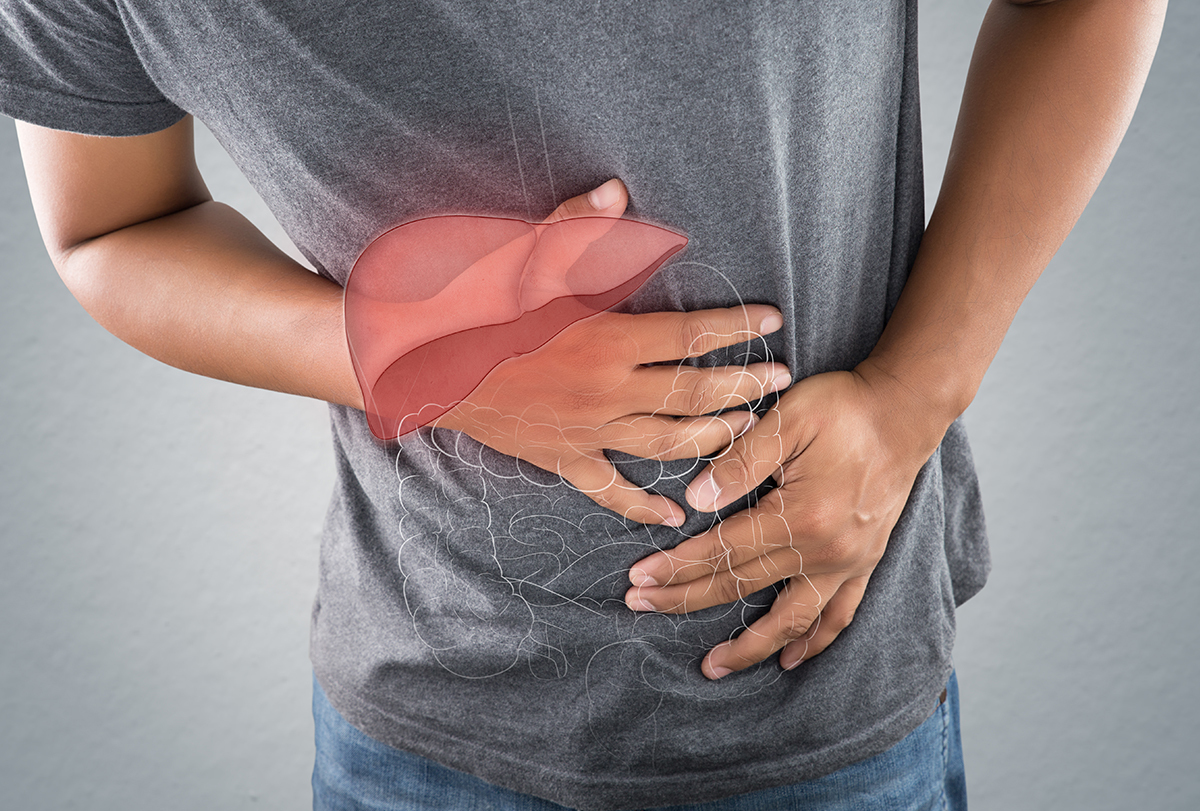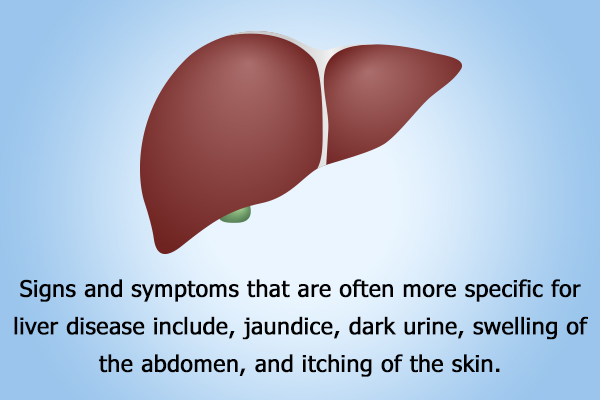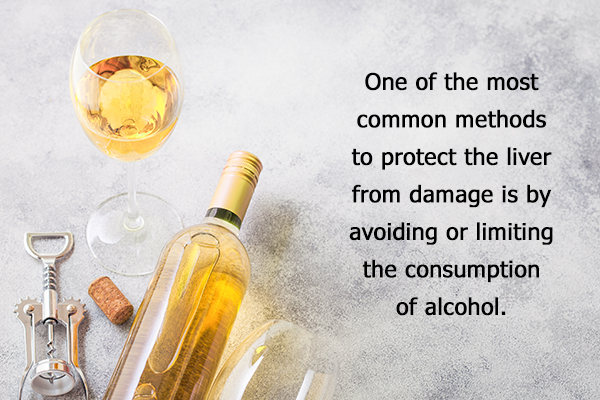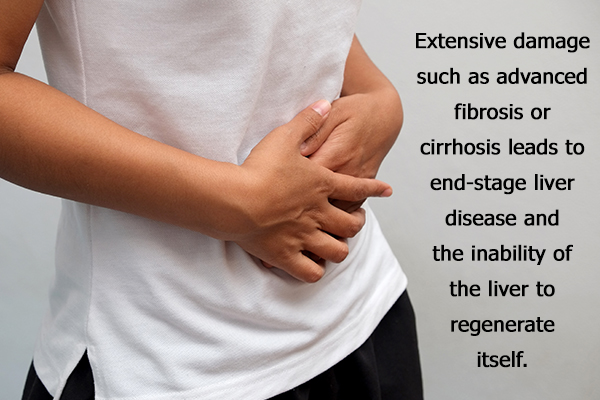In this article:
The liver is a vital solid organ located in the right upper quadrant of the abdomen. Weighing about 1.5%–2.5% of the body weight, the liver is responsible for performing multiple functions that are essential to the body’s survival. (1)

Some of these critical functions include contributing to the body’s ability to store and transport nutrients, detoxifying toxins, and supporting functions of digestion, immunity, and metabolism.
At the macroscopic level, the liver is one of the largest organs in the body. It is wedge shaped and brown in color. The liver receives a dual blood supply from the hepatic artery and portal vein. The liver also creates bile and contains bile ducts to transport bile to the intestines and for storage in the gallbladder.
On the microscopic level, the liver is made up of highly specialized cells called hepatocytes, which make up the majority of the liver. Other microscopic structures include Kupffer cells, stellate cells, blood vessels, bile ducts, and supporting structures. (2)
The study of the liver is called hepatology. A physician or researcher that specializes in the study and treatment of liver disease is called a hepatologist.
Causes of Liver Disease
A multitude of diseases can interfere with the liver’s ability to function normally. Disease can be acquired or congenital and in clinical practice often categorized as acute liver disease or chronic liver disease.
A few of the commonly seen diseases of the liver include:
- Alcoholic liver disease
- Non-alcoholic fatty liver disease (NAFLD)
- Viral hepatitis (hepatitis A, B, C, D, E)
- Autoimmune hepatitis, including autoimmune conditions of the biliary system
- Infections of the liver
- Pregnancy-specific liver disease
- Toxin- or drug-induced liver injury (DILI)
- Liver cancers
- Genetic liver disease (hemochromatosis, alpha-1 antitrypsin deficiency, Wilson’s disease, etc.)
Major Signs of Liver Damage

It is important to understand that damage to the liver can start well before any signs or symptoms develop. In general, the type of liver insult will dictate the type of presentation a person with liver disease will have.
However, there are a few broad signs and symptoms that would suggest early liver damage. One of the earliest indicators of damage or inflammation of the liver, aka hepatitis, is the elevation in certain blood levels collectively called the “liver function test” (LFT).
Specifically, the levels commonly elevated are those of aspartate aminotransferase (AST) and alanine aminotransferase (ALT). These enzyme levels are often the first to increase in the blood when the liver is inflamed even before any signs and symptoms may develop.
Other components of the LFT include:
- Total and direct bilirubin,
- Gamma-glutamyltransferase (GGT)
- Lactate dehydrogenase (LDH)
- Alkaline phosphatase (ALP)
- Albumin and total protein
- Prothrombin time (PT)
Individually, these levels can be elevated in other non-liver-related diseases; however, clinicians use a combination of these tests to determine the degree of damage and function of the liver.
Early signs and symptoms of liver disease can be very vague and often include findings shared with other benign and serious conditions, including:
- Generalized fatigue
- Lack of appetite
- Nausea or vomiting
- Difficulty focusing
- Weight changes
- Right upper quadrant abdominal pain
Signs and symptoms that are often more specific for liver disease include:
- Jaundice (yellowing of the skin and eyes)
- Dark urine
- Swelling (edema) of the abdomen
- Itching of the skin (pruritus), often worse at night
In chronic liver disease, these signs are much more pronounced. Chronic injury can lead to “end-stage liver disease” or cirrhosis.
Cirrhosis occurs when long-term damage to the liver causes fibrosis within the liver, making it hard and nodular with a loss of functioning hepatocytes. (3) This in turn leads to a loss of liver function and difficulty with normal blood flow through the liver, causing an increase in pressure within the portal vasculature known as portal hypertension.
These changes lead to specific signs and symptoms including:
- Confusion (hepatic encephalopathy)
- Gastrointestinal bleeding (4)
- Large, distended, and fluid-filled abdomen (ascites)
- Jaundice
- Easy bruising
- Dilated abdominal veins (caput medusae)
- Specific type of hand tremor called asterixis
Acute liver failure is not a common entity but one that is a medical emergency. Patients will often become very ill in a short period with acute changes in mental status and jaundice. Hospitalization and a possible liver transplant may be needed for survival.
Lifestyles Changes for a Healthy Liver
A healthy lifestyle including a balanced diet, exercise, avoiding toxins, and annual follow-up checkup with your doctor is the best way to maintain a healthy liver.
1. Limit the consumption of alcohol

One of the most common methods to protect the liver from damage is by avoiding or limiting the consumption of alcohol. Excessive alcohol consumption is the second most common cause of liver disease within the United States of America, leading to over 80,000 deaths annually. (5)
2. Avoid high-fat and high-processed food
In recent years, residents of developed countries have experienced an increase in body weight and body mass index (BMI), leading to obesity. Obesity-related non-alcoholic fatty liver disease is quickly becoming a common cause of chronic liver disease. (6)
Limiting high-fat and high-processed food and maintaining a healthy body weight with diet and exercise greatly contribute to a healthy liver.
3. Focus on your diet
Foods that are good for general health are good for liver health as well. Although limited research has been done on specific diets, it is well known that cruciferous vegetables such as broccoli and other high-fiber foods such as oatmeal help reduce inflammation and maintain a healthy weight.
Fruits such as berries are rich in nutrients and antioxidants, which can protect the liver. Coffee has been found to be protective to the liver as well. (7) The idea is to consume a diversified, well-balanced diet that meets all your nutritional needs, rather than focusing on just a few healthy foods.
4. Exercise regularly

Staying active is very important to keep your body in good shape, from the inside out. A daily dose of exercise helps you burn excess calories in the form of triglycerides to produce energy that fuels your system.
Triglycerides are the most abundantly found fats in the body that are derived through foods as well as naturally secreted by the liver. High triglycerides usually correspond to a fatty liver. Working out regularly along with a well-balanced diet can help reduce your triglyceride levels and liver fat.
5. Avoid toxins
Toxins are everywhere and can easily make their way inside your body. They are in the foods you eat and the air you breathe. Given that the liver is your body’s main detoxifying organ, it does most of the work of filtering out these harmful substances from your system.
But your liver cells may get damaged in the process, especially when the toxicity level is high. Thus, you must do your best to minimize the toxic burden on your liver by avoiding exposure to these damaging elements on an everyday basis.
Some of the most common sources of toxins are cleaning products, cigarettes, aerosols, insecticides, pollution, chemicals, and food additives. If you must use aerosols, make sure the room is properly ventilated and always put a mask on to limit toxin inhalation.
Liver Damage and Regeneration

It is true that the liver has the ability to regenerate and revive itself to a certain extent. Mild to moderate damage such as inflammation and early fibrosis can regress when the liver disease causing the damage is treated or cured.
Final Word
Extensive damage such as advanced fibrosis or cirrhosis leads to end-stage liver disease and the inability of the liver to regenerate itself. At this point, a liver transplant may be needed.
This is why you must educate yourself about the early signs of liver damage and seek immediate medical help if you experience any of them. It could very well be a false alarm or a sign of something else, but better safe than sorry.
Prompt treatment will stop the liver damage from getting worse and help you make a fast, easy, and complete recovery.
- Was this article helpful?
- YES, THANKS!NOT REALLY


